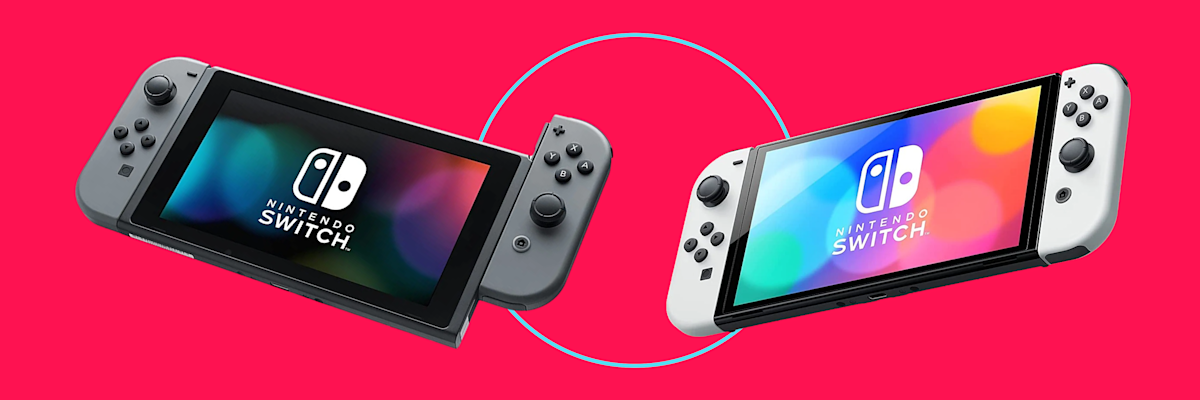Nintendo Switch OLED vs Nintendo Switch features
Since it hit the market in 2017, the Nintendo Switch has been a huge hit with gamers young and old. One of the fastest-selling consoles of all time, it’s an example of a design risk that well and truly paid off. Its distinctive combination of a handheld console design with the option to link up to a TV or monitor struck a chord with the gaming public.
What is the Nintendo Switch OLED?
As the name implies, the new Nintendo Switch OLED takes the popular hybrid Switch design and kits it out with a state-of-the-art OLED screen. Short for organic light-emitting diode, OLED is a state-of-the-art display technology that swaps classic LED backlighting for its own self-illuminating pixel-by-pixel technique – with stunning results in terms of color and contrast that promise to enhance gameplay. Let’s take a look at the Nintendo Switch vs Nintendo Switch OLED.
Differences between the Nintendo Switch vs OLED model
Design
If it ain’t broke, don’t fix it: the Switch OLED looks a lot like the latest version of its popular predecessor. However, if you look a little closer, the main difference between Switch OLED and Switch is the bezels, which have been streamlined to incorporate a larger screen within a similarly compact design. The kickstand is also a little sturdier on the Nintendo OLED vs normal Switch kickstands. Overall, the effect is of a slight visual retool rather than a major overhaul.
Display
While the screen resolution remains at 1280 x 720, the Switch OLED boasts a 7-inch OLED display to work its magic on distinctive visuals. As with any OLED screen, the pixel-by-pixel lighting technology makes for a more effective color contrast on the Nintendo Switch OLED vs regular models.
Battery
Battery life stays the same as the latest edition of the original Switch, offering around four-and-a-half to nine hours of gameplay.
Games
The good news: the Switch OLED is compatible with all the classic Nintendo Switch games we know and love. However, the new design doesn’t come with any major boost in processing performance that would add more expansive games to the console’s arsenal.
Controllers
The Switch OLED uses the same system to attach controllers as the original model, meaning any of the classic JoyCon controllers you already have for your Switch should still work on this upgrade.
Price
The Switch OLED is around $50 more expensive than its original counterpart. At Grover, the OLED edition is available for rent for a few dollars more per month than the original Switch.
Which Nintendo Switch model should you buy?
In the battle of Switch OLED vs Switch, it comes down to this: if you’re a graphics guru looking for stunning gameplay on your handheld games console, the Nintendo Switch OLED is a must, at only a slightly higher price point than the original Switch, with all the benefits and a beautiful new display. However, if you’re considering which Nintendo Switch to buy and looking for a bigger bang for your extra buck, you may be better off sticking with the original Switch for now.


